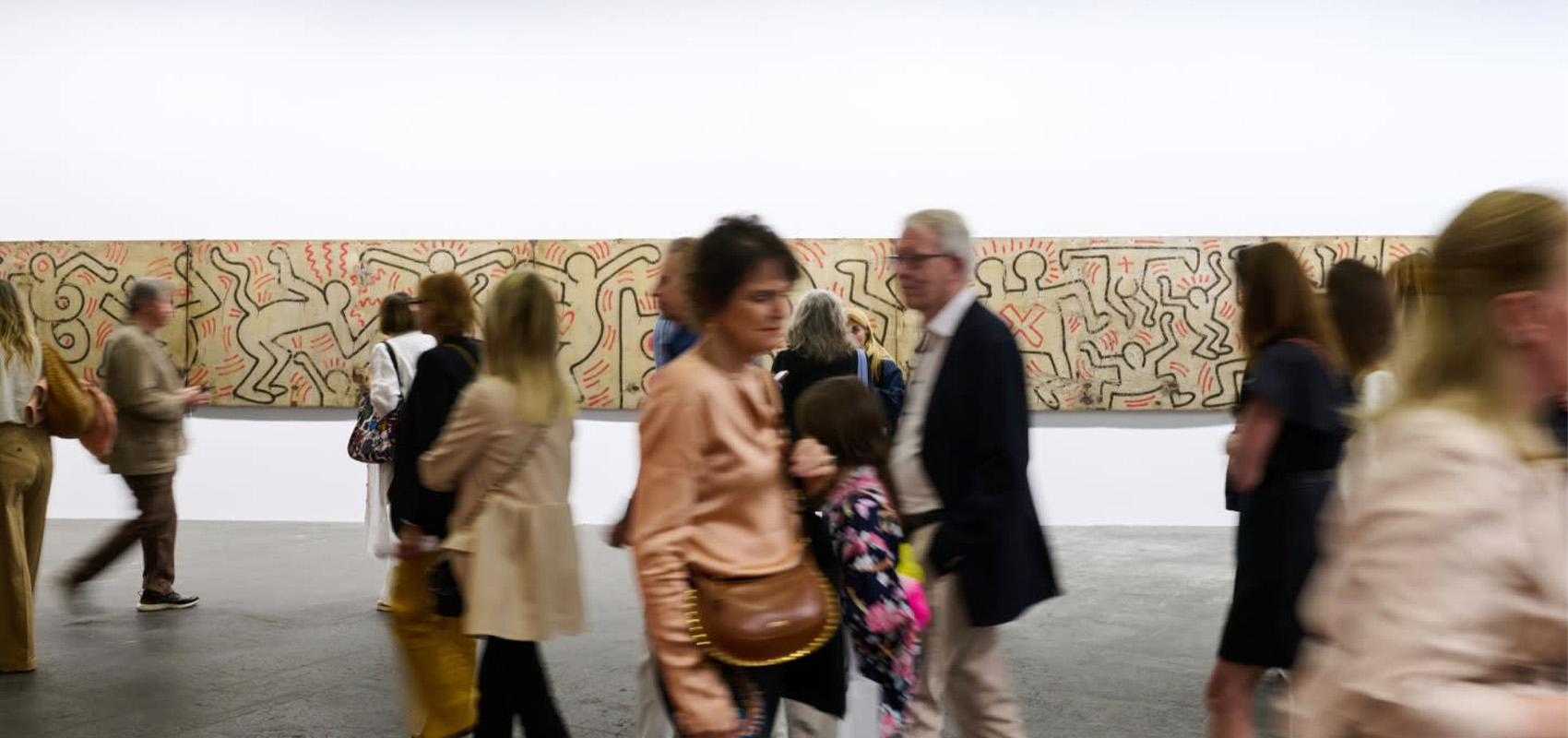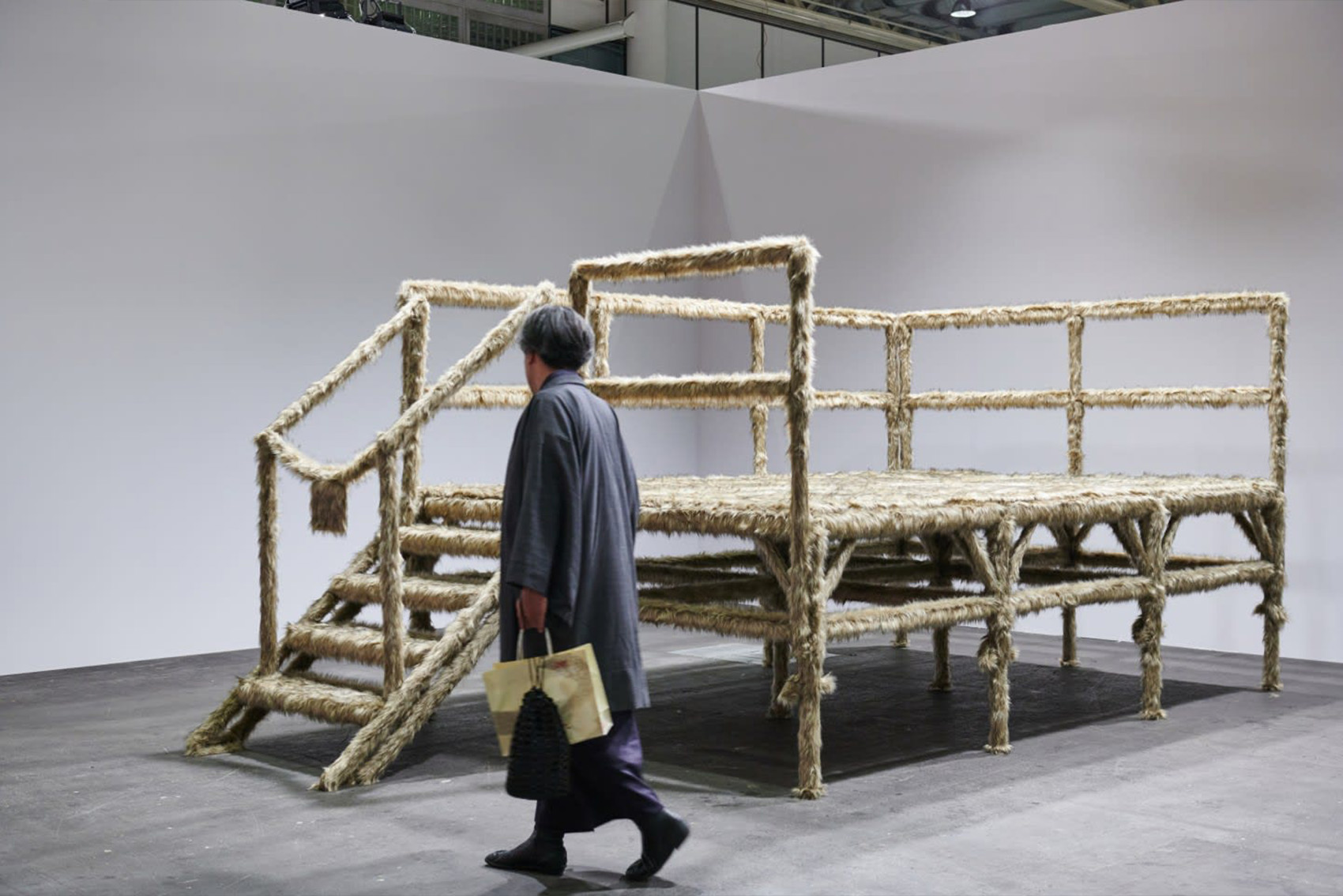
Art Basel: Five Highlights That Stole the Show
“Artists allow us to see things that we don’t see ourselves” declared Art Basel CEO Noah Horowitz with graceful ease when questioned, “What does art mean to you personally?” This seemingly straightforward yet wise question stirred my own reflections. What is art to me? Is it a dialogue, a provocation, or a mirror to one’s deepest self? As these contemplations enveloped my mind, I wandered through Art Basel, the premier art fair that has undeniably surpassed expectations this year.
With 285 galleries from 40 countries and territories, Art Basel stands as a display of exquisite artworks, ranging from early 20th-century modern visionaries to the most promising emerging talents. This year, there is a tangible feeling that art has not only expanded in quantity but also in its depth and sensory impact. Gallery owners are boldly tackling issues of racism, spirituality, war, peace, and ecology, while also critically examining consumerism and sexism — and, of course, not forgetting to inject some self-deprecating humor. Take, for example, Christine Tien Wang’s oil painting that proclaims, “I’m cringe, but I am free (and a cow watching the sunset).” In times of turbulence, humanity’s laughter rings truer than ever.

Alicia Kwade
ParaPosition, 2024
Powder-coated stainless steel, stone, bronze; 517 x 686 x 122 cm
303 Gallery, New York
Mennour, Paris
Pace, New York
1 – Alicja Kwade’s “ParaPosition”
In this article, I’m diving into highlights that stole the show, beginning with a standout piece at Art Basel: Alicja Kwade’s ParaPosition. This exquisite masterpiece features interlocking steel frames that cradle two substantial boulders, creating a breathtaking juxtaposition of weight and delicacy. The interplay of steel and stone draws viewers into a vast yet fragile universe where simple forms yield complex meanings. A bronze chair, elegantly positioned between these elements and directly beneath one of the boulders, invites us to ponder the very essence of our existence. The magic of Kwade’s work lies in these sizable stones that, despite their immense weight, appear to defy gravity in a graceful, almost weightless balance.
Kwade, ever the keen observer and impartial artist, encourages us to reflect on our relationship with the world. Balancing poetic elegance with sharp critical insight, she challenges the systems we’ve devised to banish uncertainty and impose order on an otherwise incomprehensible universe.

Ryan Gander
School of Languages, 2023
Animatronic sculpture, audio, desk, fan, clock
dimensions variable; edition 1 of 3 + 2 AP
Lisson, London
2 – Ryan Gander’s “School of Languages”
The second art installation you simply must acquaint yourself with is Ryan Gander’s “School of Languages.” This thought-provoking piece delves into the intricate relationship between our evolutionary past and the frenetic dynamics of contemporary society, sculpted by relentless capitalist growth, speed, and skewed notions of progress.
As you step into the space, you’re greeted by a corporate-looking office desk, an electric floor fan, and a digital wall clock. The fan wafts a faint, evocative scent of dampness and urine. Beneath the desk, a life-size female gorilla resides. Despite her timid demeanor, she exudes a palpable desire to learn, meticulously using her fingers to notate units. The purpose of her recording — be it units of time, currency, or some other fluctuating quantity — remains an enigma. Upon closer inspection, the wall clock reveals its clever design: two displays merging into a single object, diverging at odd angles to create a mesmerizing illusion of double vision. Gander’s installation is a masterful commentary on the complexities of modern existence, inviting viewers to reflect on the intersections of past and present.

Chiharu Shiota
The Extended Line, 2023 – 2024
Rope, paper
dimensions variable
Templon, Paris
3 – Chiharu Shiota’s “The Extended Line”
Another highlight that undoubtedly steals the show is Chiharu Shiota’s latest masterpiece, “The Extended Line.” This monumental 16 × 9 meter installation, a web of vibrant red ropes cascading above the artist’s outstretched hands, serves as a poignant metaphor for the human experience. “What does it mean to be human?” Shiota’s evocative query echoes through the crimson threads, inviting viewers to ponder their own existence amidst the tapestry of life’s uncertainties. Through her intricate web of symbolism, she delves into the shared emotions of suffering, regret, and joy that bind us all together in the enigmatic dance of life.
As visitors gaze upon the mesmerizing display of intertwined fibers, each bearing the weight of Shiota’s introspection, they are reminded of the power of collective contemplation. The crimson ropes, like lifelines suspended in mid-air, symbolize both the fragility and resilience of the human spirit, reaching out to touch the hearts of all who behold them. “The Extended Line” is not merely an installation; it is a poetic ode to the complexities of being alive.

Martin Margiela
Podium, 2024
Metal, wood, synthetic fur
approx. 150-200 x 366 x 244 cm
Bernier/Eliades, Athens
4 – Martin Margiela’s “Podium”
No homage to the domain of fashion would be complete without a nod to the illustrious Martin Margiela and his awe-inspiring creation, “Podium.” Presented at the Lafayette Anticipations Foundation in Paris, this avant-garde installation captivated the art world with its innovative approach.
Initially presented as a minimalist metal platform, it underwent a remarkable metamorphosis under Margiela’s discerning eye. The unexpected infusion of faux fur breathed new life into the once austere object, transforming it into a mesmerizing spectacle that defies convention.
Through “Podium,” Margiela invites us to embark on a journey of discovery and transformation, where the ordinary is elevated to the extraordinary. In this captivating fusion of creativity and craftsmanship, Margiela’s artistic prowess shines brightly, illuminating the path to a realm where imagination knows no bounds.

Kresiah Mukwazhi
Nyenyedzi nomwe (The Seven Sisters Pleiades), 2024
Bra straps on aluminum frame
350 x 700 cm
blank projects, Cape Town
Jan Kaps, Cologne
5 – Kresiah Mukwazhi’s “The Seven Sisters Pleiades”
Coming in at number five on my list is an artwork that truly sent shivers down my spine — Kresiah Mukwazhi’s “The Seven Sisters Pleiades.”This monumental artwork delves deep into the complexities of the female body as a battleground for power and autonomy.
Crafted from salvaged bra straps, torn lace, and fabric sourced from used lingerie, Nyenyedzi Nomwe embodies the collective stories and experiences of its previous owners, infusing the installation with a tapestry of personal histories and emotional resonance. Through the thoughtful selection of materials laden with symbolic weight, Mukwazhi challenges societal norms and taboos that seek to confine and control women, pushing back against entrenched patriarchy and systemic injustices.
Returning to the question I posed at the beginning of this article, I can only draw one conclusion: In our intricate world, art serves as a mirror, reflecting the myriad complexities of the human experience. Therefore, it is very important to periodically look into this mirror and find yourself in it.
images COURTESY OF ART BASEL
author ANASTASIA YOVANOVSKA

